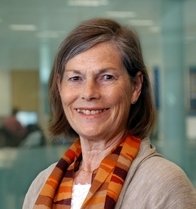Louise Johnson
| Louise Johnson | |
|---|---|
 |
|
| Born | Louise Napier Johnson 26 September 1940 |
| Died | 25 September 2012 (aged 71) |
| Institutions | University of Oxford |
| Alma mater | University College London |
| Thesis | (1965) |
| Doctoral advisor | David Chilton Phillips |
| Other academic advisors | Frederic M. Richards |
| Doctoral students | Jenny Martin |
| Known for | Discovering the structure of lysozyme and N-Acetylglucosamine |
| Notable awards | Dame of the British Empire, 2003 David Phillips Professor of Molecular Biophysics, University of Oxford, 1990-2007 Hon Fellow Somerville College, Oxford, 1991-2012 Emeritus Fellow Corpus Christi College, Oxford, 2008-2012 Fellow Diamond Light Source, 2008-2011 Hon DSc University of St Andrews, 1992 Hon DSc University of Bath, 2004 Hon DSc Imperial College London, 2009 Hon DSc University of Cambridge, 2010 Fellow of the Royal Society, 1990 Associate Fellow Third World Academy of Science, 2000 Foreign Associate American Academy of Sciences, 2011 |
| Spouse | Abdus Salam |
Professor Dame Louise Napier Johnson, DBE, FRS (26 September 1940 – 25 September 2012), was a British biochemist and protein crystallographer. She was David Phillips Professor of Molecular Biophysics at the University of Oxford from 1990 to 2007, and later an emeritus professor.
Louise Napier Johnson was born on 26 September 1940 at South Bank Nursing Home, Worcester, as the second of three daughters of George Edmund Johnson (1904–1992), a wool broker then serving in the RAF, and his wife, Elizabeth Minna, née King (1914–1992). The family was living at White Cottage, Rushwick, near Worcester, at the time.
Johnson attended Wimbledon High School for Girls from 1952 to 1959, where girls were encouraged to study science and to pursue useful careers. Her mother had read biochemistry and physiology at University College London in the 1930s and was supportive of Johnson's decision to pursue a scientific career. She went to University College London in 1959 to read Physics and coming from an all-girls school, she was surprised to find herself one of only four girls in a class of 40.
She took theoretical physics as her third-year option and graduated with a 2.1 degree. Whilst working at the Atomic Energy Authority, Harwell, on neutron diffraction, during one of her vacations, she met Dr Uli Arndt, an instrument scientist, who worked at the Royal Institution, London. She was impressed by the work taking place there and in 1962 she moved to the Royal Institution to do a PhD in biophysics. Her graduate supervisor was David Phillips, whose team was working on the crystal structure of lysozyme. Her first task was to determine the structure of a sugar molecule, N-acetylglucosamine, using x-ray diffraction, which she solved within a year. She then moved onto the study of the substrate binding to the protein lysozyme and was part of the team, that discovered the structure of the enzyme lysozyme; this was the third protein structure ever solved by x-ray crystallography, and the first enzyme. She gained her PhD in 1965 and went to the laboratory of Professor F.M. Richards at Yale University for a post-doctoral year in 1966. At Yale she worked as part of a team with Fred Richards and Hal Wyckoff on the crystal structure of another enzyme, ribonuclease, which was solved shortly after she left: the fourth protein structure solved.
...
Wikipedia
